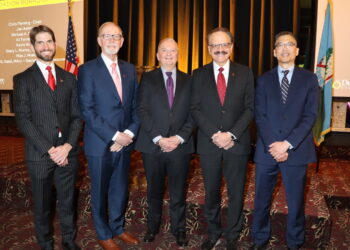OKLAHOMA CITY (OBV) – An interim study was conducted at the Oklahoma State Capitol to explore whether an outcomes-based funding model for community colleges would better address the state’s modern workforce needs.
Rep. Monroe Nichols, D-Tulsa, led the interim study last week.
The outcomes-based funding model that was discussed during the study is inspired by a funding model used in Texas.
Kelle Kieschnick, from Texas’ Commit Partnership, explained during the interim study that the Texas model allocates funds based on student achievements such as graduation and certificate completion. Funds are typically allocated based on enrollment.
The outcomes-based model is more focused on growing the economy and building workforce, according to Nichols.
“We heard that Oklahoma ranks 48th in the country in educational attainment,” Nichols said. “This model focuses on getting better outcomes and being a partner with our Community Colleges to transform our economy. Investing in our workforce attracts businesses, which ensures workers, especially in cities like Tulsa, have access to careers that pay well and offer benefits.”
The interim study spotlighted House Bill 8 from Texas, which shifts that states funding allocation, promoting two-year programs, dual enrollment, grants for community workforce needs and collaboration between education institutions across the state.
The bill sought to flip Texas’ funding model on its head, focusing funding of colleges on outcomes, Kieschnick said.
“Under HB8, 95 percent of the funding is tied to outcomes. For many colleges, 100 percent of their funding is through outcomes,” Kieschnick said.
People who struggle to afford high college or vocational education costs benefit when states invest in educational opportunities and four-year degree programs, according to Kieschnick.
“In Texas, the state wasn’t investing in the two-year grant programs at the same level as the four-year programs,” she said. “One of the things this bill did is bring up our two-year grants to the same level of four-year grants, so now 70 percent of low-income students have access to this funding.”
Insights from the interim study are expected to lead to further discussion about revamping how the state funds community colleges. Ensuring community colleges are equipped to meet the state’s workforce needs will be a key focus, an Oklahoma House of Representatives news release states.

















